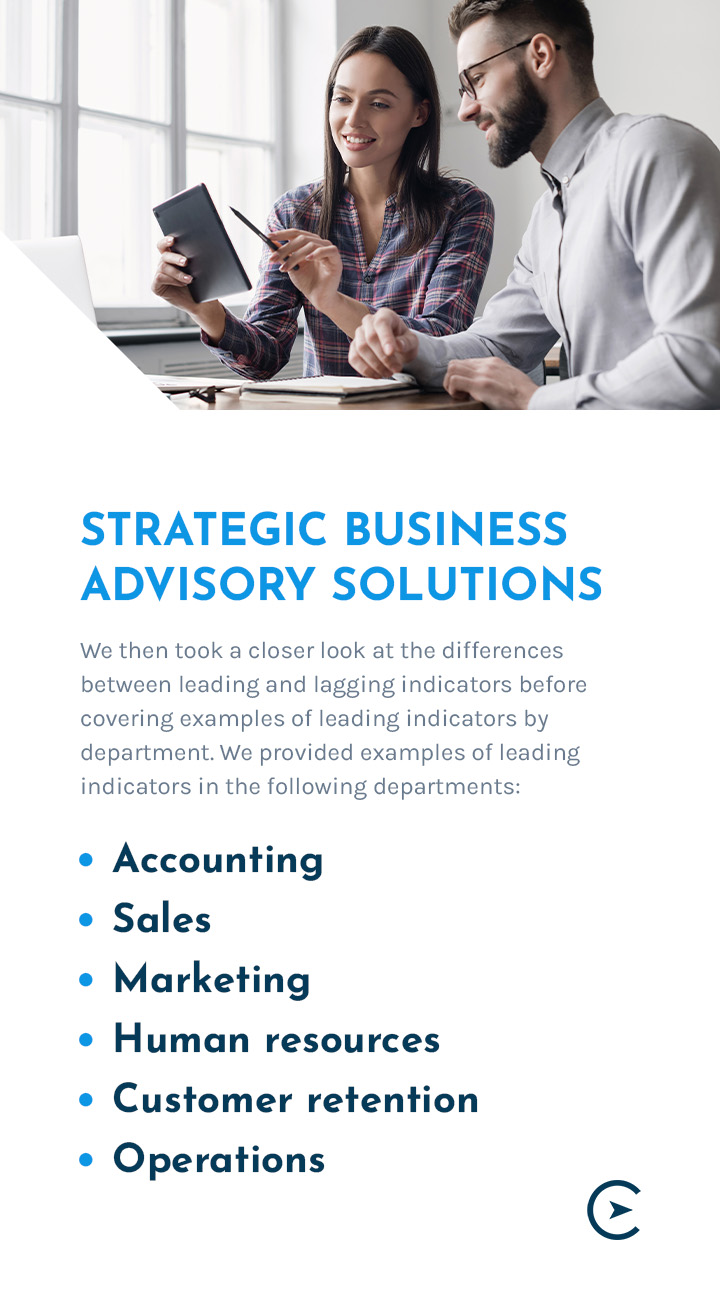Finance and accounting operations that might have been effective a decade or so ago are outdated today. Software has all moved to the cloud and the number of operating systems has increased to the point where data is siloed and dispersed, lacking the connectivity needed to drive real insights.
Companies struggle to address and untangle data accuracy issues resulting in bad data in and bad data out. This all comes during a time when financial reporting needs and strategic decisions have moved closer to real-time. Massive changes are happening yet traditional finance and accounting solutions and methodologies have remained relatively stagnant.
Our goal when writing the Finance and Accounting Playbook was to create a guide that helped businesses navigate fast-moving changes in the finance and accounting industry, ultimately rethinking the traditional approaches to managing the department. We’ve examined in detail the pain points companies face most often and have developed modern ways to solve them. We hope that our unique, bottom-up approach provides the inspiration for your company to reimagine what a finance and accounting department should look like in today’s environment.
Let’s review the key takeaways from the playbook, chapter by chapter. If you have any questions about our process and solutions, feel free to reach out.
1. Finance and Accounting Help
In the first part of the playbook, we started from the beginning by defining the key functions and responsibilities of a typical finance and accounting (F&A) department and the role each function plays in creating an efficient F&A structure. We noted that the activities of the F&A team can vary from business to business, based on size and type. Since we focus on companies with revenues under $25 million, we zeroed in on the functions that are most critical for our client base.
The core F&A functions we touched on include:
- Accounts receivable and payable: Companies often seek accounts payable and accounts receivable help because money in and money out are two critical functions of their business.
- Payroll: Employees need to get paid, and many companies need payroll help to ensure accurate wages calculation and effective onboarding.
- Financial reporting and controls: A company needs accurate financial reports and controls in place to confirm accuracy. Many of our clients seek out financial report and controls help to ensure this function is managed effectively.
- Treasury and cash management: Treasury and cash management helps a company have the cash it needs on hand to meet its obligations.
- Financial planning and analysis: Members of the financial planning and analysis team help companies develop budgets and strategies. It’s a critical function for a business’s financial future.
- Corporate development and strategy: Corporate development and strategy help a company create plans for the future, such as by identifying strategic partnerships or opportunities for acquisitions.
- Tax and compliance: Companies often need tax and compliance help to ensure they pay what they owe and nothing they don’t. Larger companies might have a separate function just for compliance.
2. Finance and Accounting Department Solutions
Next, we discussed common issues with traditional F&A departments and what those issues mean for smaller companies. We started out by identifying the who’s-who on a traditional finance and accounting team. The team members typically include:
- The CFO
- VP of Finance
- Financial Analyst
- Controller
- Senior/Staff Accountant
- Bookkeeper
Knowing who’s who on an F&A team helps you know who your company needs to hire and can help you create a timeline for filling those roles.
We then took a deep dive into the common challenges smaller companies — usually with less than $25 million in revenue — face when they try to adopt the standard model. Without a true playbook, it’s common for founders to make the same mistakes repeatedly as they build their F&A departments.
Those mistakes include:
- Not investing enough in F&A
- Assuming the CPA will fix everything
- Financial inefficiencies
- Relying on manual processes
- A top-down CFO approach

3. Bottom-Up Finance and Accounting Approach
In chapter three, we introduced the approach we use when working with clients and establishing an F&A department. We take a bottom-up approach to F&A, which focuses on resolving core issues rather than merely putting a bandage on problems. We walked you through our approach to F&A step by step:
- Financial operations discovery: The bottom-up approach starts with careful observation of the main problem and a thorough untangling of the issues that might be affecting your company. Usually, we approach the issues from the point of view of your customers. This lets you see your company’s core activities up close and gives you a thorough understanding of what’s involved in your organization’s operations. From there, you can focus on building the foundation needed for a future-forward F&A department.
- Data cleanup: After financial operations discovery, you need to clean up your company’s data. You need accurate financial information to make appropriate financial decisions for your organization. Data cleanup might involve changing from cash to accrual methods, reconciling credit cards and expenses, using the most recent tax returns for beginning balance sheet numbers and recognizing revenue through year-to-date.
- Building the FinOps department: Next, it’s time to focus on creating a FinOps department, a team that has technology at its core. Members of your company’s FinOps team include an accounting technologist, financial technologist, controller and financial strategist.
4. Finance and Accounting Technology Stack Solution
We’ve stressed that technology is critical for the modern F&A department. In chapter four of our playbook, we delved into the technological tools our FinOps team uses to maximize productivity and streamline operations. We covered the software solutions and tools we use to help our clients with the following:
- General ledger: Tools include Quickbooks Online and Xero
- Accounts payable and receivable: Tools include Bills.com
- Expense management: Tools include Expensify, Divvy, Brex and Receipt Bank
- Payment processing: Tools include Stripe and Square
- E-commerce: Tools include Shopify
- Payroll and timekeeping: Tools include Gusto and QuickBooks Time
- Customer relationship management (CRM): Tools include Salesforce and Hubspot
- Inventory management: Tools include DEAR Systems, Cin7, Fishbowl and SkuVault
- PEO: Tools include Nextep, Rippling and Insperity
- Reporting and forecasts: Tools include Jirav, Fathom and Futrili
- Revenue management: Tools include SaasOptics.
- Investor relations and equity management: Tools include Carta
- International payments: Tools include Veem
5. Structured Financial Reporting Foundation Solution
After focusing on inputs during the first four chapters of the playbook, in chapter five, we changed course and began focusing on outputs. The ultimate output goal for any company is to develop key performance indicators (KPIs) and actionable financial reports. But everything starts with the Chart of Accounts (COA).
In chapter five, we examined the Chart of Accounts and its role as the key building block for quality reporting. We started by defining the COA as an index of all the accounts in your general ledger. Within the COA, those accounts are split into categories that create the foundation for your organization’s financial statements. With a well-structured COA, you gain clarity and insights into your organization’s performance and financial statements.
Once we introduced the concept of the COA and explained what should be on it, we covered the approach to take to structure the COA. Finally, we covered how to segment your financial reports and perform revenue recognition.

6. KPI Solutions
We continued our exploration of outputs in chapter six, when we discussed how to develop and build lagging key performance indicators (KPIs). We began with a definition of KPIs, specifically lagging KPIs. Lagging KPIs are based on historical events. They are the results predicted by your monthly leading indicators. You develop lagging KPIs through closed monthly financials.
Next, we split lagging KPIs into three categories:
- Product-team: Debt, churn rate and revenue growth all fall into the product-market fit category.
- Product-market: Revenue per employee, gross margin per employee, labor efficiency ratio and realization and utilization rates are KPIs in the team-market category.
- Team-market: Direct costs and sales efficiency are two examples of KPIs in the product team category.
Finally, we wrapped up chapter six with a definition of some of the most important business metrics.
7. Bottom-Up Budget and Cash Forecasting Development
In chapter seven, we zeroed in on how to build a budget from the bottom up and the importance of cash forecasting. We illuminated the differences between the two and covered why each one plays an important role in a company’s financial health.
To recap, both budgets and cash forecasts are forward-focused, but a budget is a spending plan that a business follows to reach its goals. A cash forecast uses past data to determine where a company is going in the future.
With a budget, your company lays out what it wants to do over a year or another defined period. You should update the budget as needed. Throughout the period, you should compare your company’s budget to your actual earnings and spending to see if things align or if adjustments are necessary.
In contrast, your company creates a cash forecast to predict the future, based on your current reality. The forecast also focuses on cash balances, plus revenue and expenses. Your cash forecast should be updated more frequently than your budget — monthly or quarterly is ideal.
After we defined a budget and cash forecast, we walked you through the process of putting them together. We showed you the approach we most commonly use when creating a bottom-up budget for our clients and explained the type of information we most often request.
Circling back to chapter six, we then turned to lagging KPIs again and explained the metrics that most often play a role in creating a cash forecast. Those KPIs include:
- Working capital
- Customer growth rate
- Average price per customer
- Accounts receivable turnover
- Customer acquisition costs
8. Projection Modeling Solutions
Starting in chapter eight, we began focusing on putting together your company’s unique financial story. We explained how you can use projection modeling to create your story and measure the distance your business has to go between where it is now and where you want it to go in the future.
To start off, we defined a financial model as a tool most commonly built with spreadsheets and historical data. A financial model forecasts a business’s financial performance. You need past performance data and future assumptions to put together a financial model. The documents you most likely need include:
- Balance sheet
- Cash flow statement
- Income statement
After you’ve created a basic financial model, you can build more models to help you achieve specific goals, such as:
- Discounted cash flow analysis
- Sensitivity analysis
- Leveraged-buyout projections
Since it’s common for people to confuse cash forecasts, budgets, KPIs and financial statements with financial models, we took the time to define each and illustrate how they differ from a financial model. We then described several situations when a financial model comes in handy, such as when you’re trying to raise debt or equity capital when you’re growing your business, or when it’s time to sell your business.
It’s essential that your financial model be based on reality. We covered the approaches you can take to ensure the model you build is accurate and will be as useful as possible for your company. From there, we detailed the ways you can build your financial model and present it. Options include using a pitch deck or Jirav.
Finally, we wrapped up chapter eight by going over some best practices that will help you build a flexible, easy-to-read model. Following the best practices we outlined helps to ensure your model meets industry expectations and accomplishes the goals you want it to accomplish.

9. Strategic Business Advisory Solutions
The last chapter of our F&A Playbook put together everything we covered in chapters one through eight to show how we can use leading indicators and strategic business advisory to predict your company’s future financial performance.
To start off chapter nine, we explained leading indicators. You might remember that lagging KPIs are historicals, and come directly from your financials. Leading indicators are the small actions that contribute to major performance changes in the future. They play a considerable role in predicting your company’s future performance.
Thanks to leading indicators, your company has ample opportunity to make adjustments and course-correct. You can use them to spot trends and zero in on the indicators that have the biggest impact on your company.
We then took a closer look at the differences between leading and lagging indicators before covering examples of leading indicators by department. We provided examples of leading indicators in the following departments:
- Accounting
- Sales
- Marketing
- Human resources
- Customer retention
- Operations
After defining leading indicators, we covered how to develop scorecards to use to make predictions for your company. We outlined how your leading indicator scorecards can point you in the direction of the most important lagging indicator and how you can use that information to discover the metric that matters most for your business. We provided examples of how you can use leading indicators to improve departmental functions.
Finally, we reviewed the benefits of using leading indicators and pointed out how they act as guideposts that direct your business to the future it wants.
Contact Compass East for Finance and Accounting Help Today
We hope you enjoyed our Financial and Accounting Playbook and found it useful for your business needs. If you have questions about our bottom-up approach to F&A or want to see how our approach, technology stack and other services can help your company grow and reach its goals, contact Compass East today.

